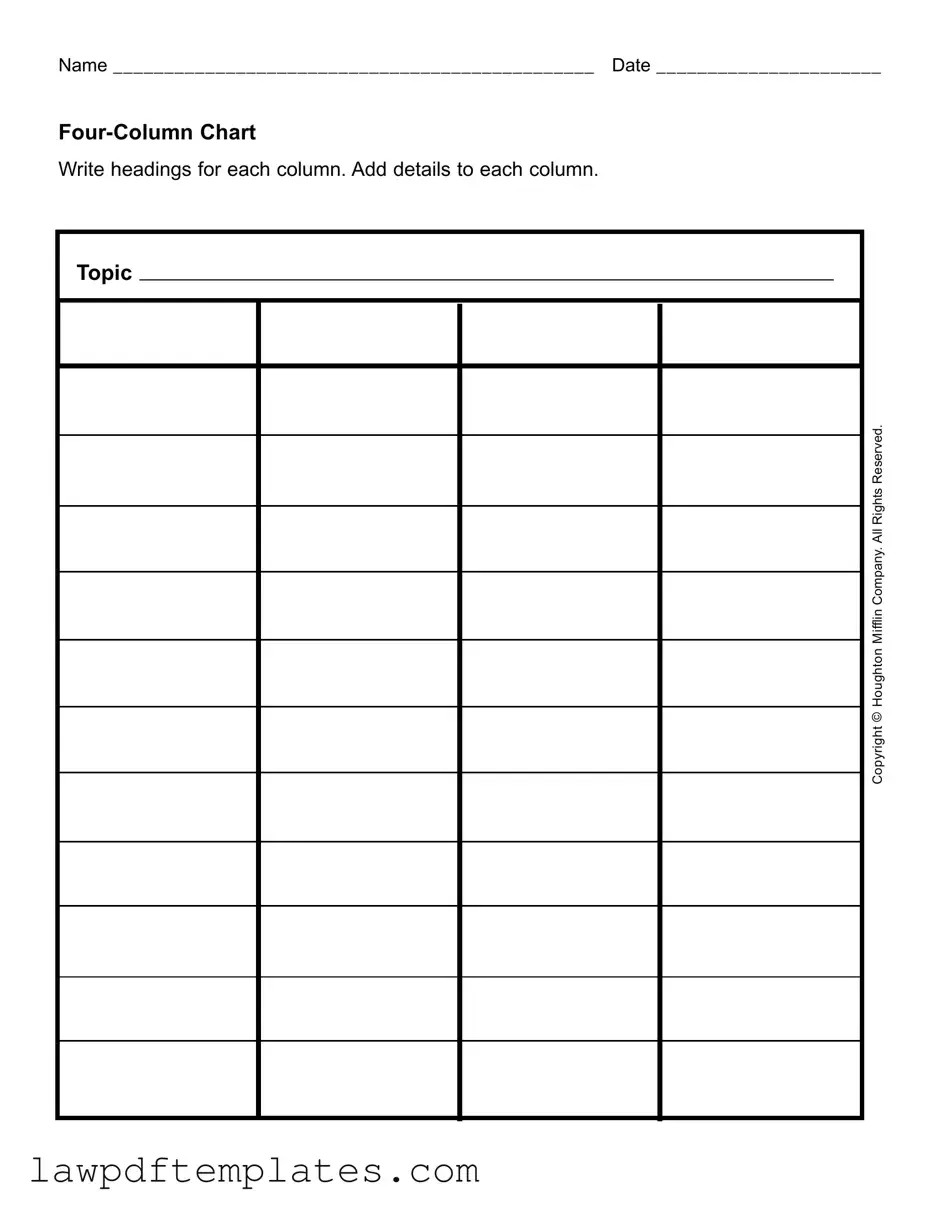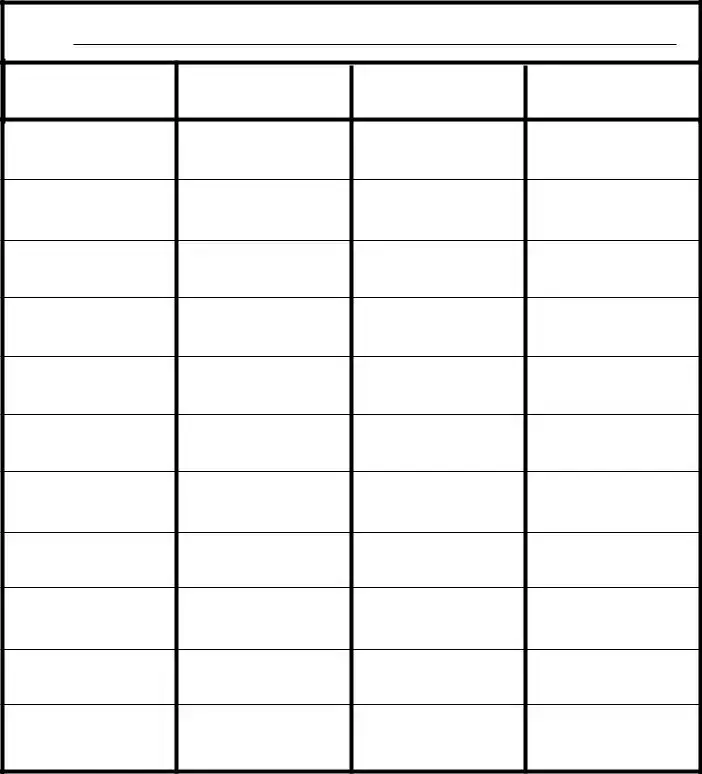Filling out the Four Column Chart form can seem straightforward, but many people make common mistakes that can lead to confusion or incomplete information. One frequent error is neglecting to write clear headings for each column. Without proper headings, it becomes challenging to understand what information belongs where. This can create a disorganized appearance and hinder the overall effectiveness of the chart.
Another mistake often made is failing to provide enough detail in each column. The purpose of the Four Column Chart is to organize information clearly. When individuals only add vague or minimal details, they defeat the purpose of the chart. It’s essential to be thorough and specific to ensure that the information is useful and easily understood.
Many people also forget to double-check their spelling and grammar. Typos can detract from the professionalism of the document. A well-presented chart reflects attention to detail, while errors can lead to misunderstandings or misinterpretations of the information provided.
In addition, some individuals overlook the importance of consistency in formatting. If one column uses bullet points while another uses full sentences, it can create a jarring visual experience. Maintaining a uniform format throughout the chart enhances readability and professionalism.
Another common oversight is leaving out the date. While it may seem minor, including the date helps provide context for the information being presented. This is particularly important if the chart is referenced later, as it allows others to understand when the details were compiled.
Some people also forget to review the overall layout of the chart. A cluttered or cramped appearance can make it difficult for readers to follow along. Ensuring there is adequate spacing between columns and rows can greatly improve clarity and presentation.
Moreover, failing to align text properly within the columns is a frequent issue. Misalignment can make the chart look unprofessional and can confuse readers. Proper alignment contributes to a clean and organized appearance, making it easier for others to digest the information.
Additionally, some individuals may not take the time to think critically about the information they are including. It’s essential to consider whether each piece of information is relevant to the topic at hand. Irrelevant details can clutter the chart and distract from the main points.
Lastly, not seeking feedback before finalizing the chart can be a significant oversight. Having a second pair of eyes review the chart can help catch mistakes or unclear sections that the original creator may have missed. Constructive feedback can lead to a more polished and effective document.

